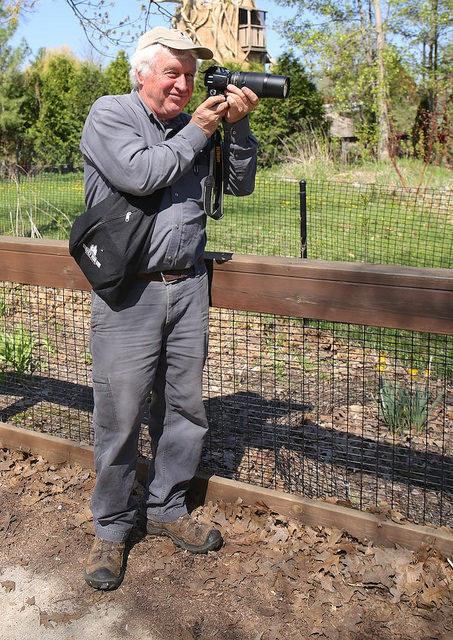Bob and Gerry Bennicoff do it all. For years, the dynamic duo have volunteered at Goose Pond Sanctuary doing whatever needs to be done: seed collecting, counting frogs, cleaning out the barn, and more. When Bob and Gerry were looking for an organization to volunteer with, we were sure glad they chose Madison Audubon!
Bob and Gerry are a major volunteers for the American kestrel nest box program where they monitor nest boxes, assist with erecting/retroffing nesting boxes, and banding adults and young; they help survey for the Columbia County Breeding Bird Atlas and have assisted with whip-poor-will counts and canoe routes — extra difficult and time-consuming activities; they provide assistance when large groups come out to tag monarchs and they also tag monarch on their own; they are key volunteers with our prescribed burn program and with prairie seed collecting and planting. They also help with the annual butterfly count, frog counts, and other projects at Goose Pond Sanctuary.
Bob and his granddaughter releasing a newly tagged monarch at Goose Pond in 2016. Photo by Arlene Koziol
“Gerry and I first became aware of Goose Pond in the late summer of 2015 at Madison Audubon's Monarch Tagging Event,” Bob recalls. “We fell in love! Oh my — the variety of flowers! Since then we have had the unique opportunity to help in many other ways. The prairie soothes our souls!”
Fortunately for Madison Audubon, the land they help, and the people they interact with, Bob and Gerry don’t plan to stop volunteering any time soon. “Gerry and I plan to volunteer for many years to come,” added Bob. “We feel the Madison Audubon organization and all the volunteers we have worked with are truly remarkable people.”
We are tremendously grateful for this power couple and all they do for the natural world and the people who tend it. If you’re interested in volunteering with Madison Audubon, we’d love your help — click here to find out ways you can best connect.
Written by Brenna Marsicek, communications director, and Mark Martin and Susan Foote-Marin, Goose Pond Sanctuary resident managers

















